#collection history
Text
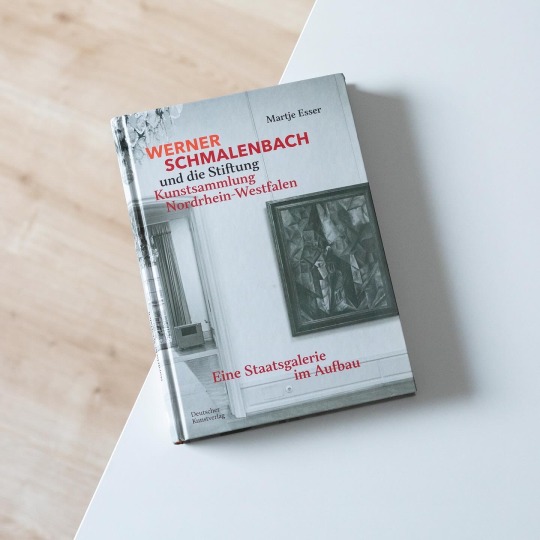
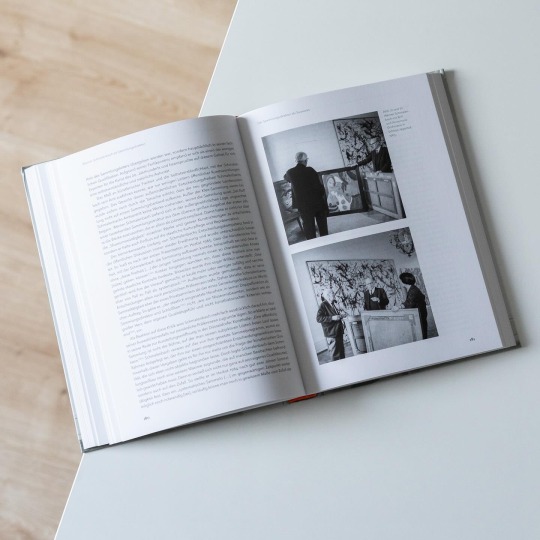
Among the many prestigious German state art collections the Kunstsammlung Nordrhein-Westfalen in Düsseldorf certainly is the most junior: formally established in 1961 it nonetheless looks back at an eventful history that started with a bang. In 1960 Minister President Franz Meyers bought the 88 piece Paul Klee collection of American collector G. David Thompson as a sign of compensation for the Nazi years and the outlawry of Klee’s art during these years. This collection in 1961 became the core of the then established state art collection of which Werner Schmalenbach became director a year later. The collection’s legal form progressively was that of a foundation under civil law, a construction that withdrew it from a direct influence through the state government and which assigned a great degree of autonomy to its director. In 2021 Deutscher Kunstverlag published Martje Esser’s dissertation „Werner Schmalenbach und die Stiftung Kunstsammlung Nordrhein-Westfalen - Eine Staatsgalerie im Aufbau“ which provides a detailed account of both the genesis and development of the art collection and the role Schmalebach played for it. Although the latter had initially proposed to model the collection after the MoMA and add contemporary art to the collection as well Schmalenbach ended up collecting primarily modernist classics of highest profile. As Martje Esser shows Schmalenbach followed a somewhat conservative policy that didn’t include taking risks by adding contemporary artists to the collection that might later prove irrelevant. This general skepticism regarding contemporary art also led to a fallout with the documenta board from which he withdrew in 1967. This notwithstanding Schmalenbach until his retirement in 1990 assembled a significant collection of modern art that includes Mondrian, Pollock, Léger and Picasso.
Martje Esser’s book is a wonderful read that convincingly amalgamates a collection history, the biography of its founding director and the tumultuous politics surrounding it in a complex but at any time highly readable narrative that ultimately also is a art-political portrait of West-Germany.
#werner schmalenbach#art book#art history#collection history#museum history#deutscher kunstverlag#book#modern art
10 notes
·
View notes
Text
What does life in North Korea look like outside of Pyongyang? 🇰🇵
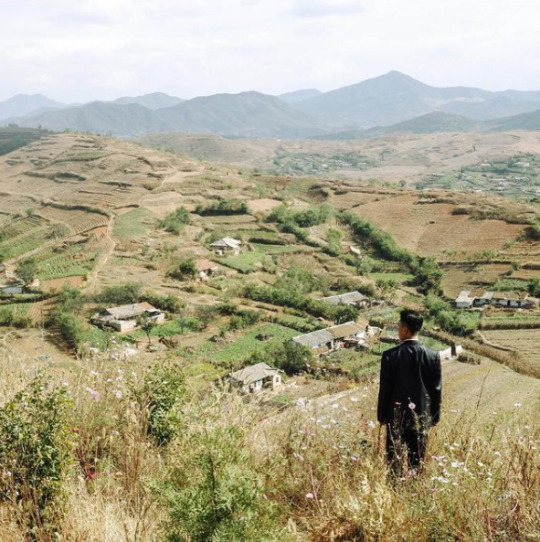
Hey, I'm back again with a very scary "tankie" post that asks you to think of North Koreans as people, and to consider their country not as a cartoonish dystopia, but as a nation that, like any other place on earth, has culture, traditions, and history.
Below is a collection of pictures from various cities and places in North Korea, along with a brief dive into some of the historical events that informs life in the so-called "hermit kingdom."
Warning: very long post
Kaesong, the historic city
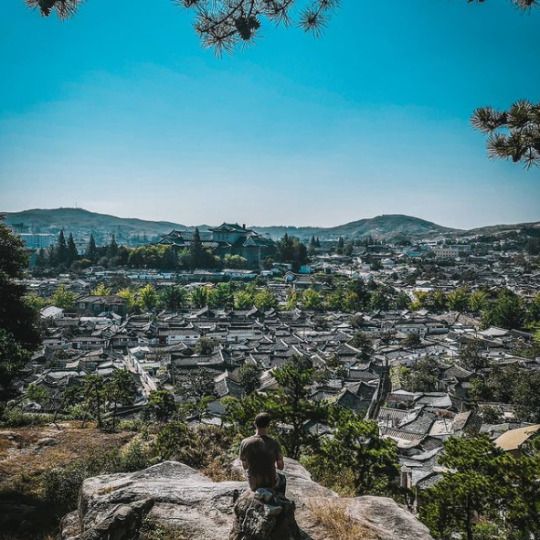
Beginning this post with Kaesong, one of the oldest cities in Korea. It's also one of the few major cities in the DPRK (i.e. "North Korea") that was not completely destroyed during the Korean war.
Every single city you'll see from this point on were victims of intense aerial bombardments from the U.S. and its allies, and had to be either partially or completely rebuilt after the war.
From 1951 to 1953, during what has now become known as the "forgotten war" in the West, the U.S. dropped 635,000 tons of bombs over Korea — most of it in the North, and on civilian population centers. An additional 32,000 tons of napalm was also deployed, engulfing whole cities in fire and inflicting people with horrific burns:
For such a simple thing to make, napalm had horrific human consequences. A bit of liquid fire, a sort of jellied gasoline, napalm clung to human skin on contact and melted off the flesh. Witnesses to napalm's impact described eyelids so burned they could not be shut and flesh that looked like "swollen, raw meat." - PBS
Ever wondered why North Koreans seem to hate the U.S so much? Well...
Keep in mind that only a few years prior to this, the U.S. had, as the first and only country in the world, used the atomic bomb as a weapon of war. Consider, too, the proximity between Japan and Korea — both geographically and as an "Other" in the Western imagination.
As the war dragged on, and it became clear the U.S. and its allies would not "win" in any conventional sense, the fear that the U.S. would resort to nuclear weapons again loomed large, adding another frightening dimension to the war that can probably go a long way in explaining the DPRK's later obsession with acquiring their own nuclear bomb.
But even without the use of nuclear weapons, the indiscriminate attack on civilians, particularly from U.S. saturation bombings, was still horrific:
"The number of Korean dead, injured or missing by war’s end approached three million, ten percent of the overall population. The majority of those killed were in the North, which had half of the population of the South; although the DPRK does not have official figures, possibly twelve to fifteen percent of the population was killed in the war, a figure close to or surpassing the proportion of Soviet citizens killed in World War II" - Charles K. Armstrong
On top of the loss of life, there's also the material damage. By the end of the war, the U.S. Air Force had, by its own estimations, destroyed somewhere around 85% of all buildings in the DPRK, leaving most cities in complete ruin. There are even stories of U.S. bombers dropping their loads into the ocean because they couldn't find any visible targets to bomb.
What you'll see below of Kaesong, then, provides both a rare glimpse of what life in North Korea looked like before the war, and a reminder of what was destroyed.

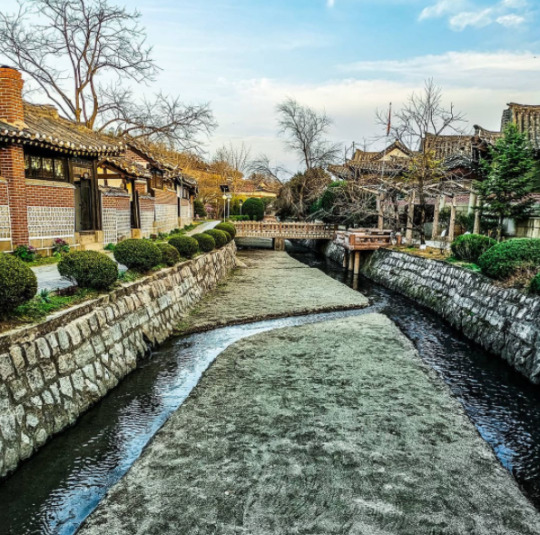

Kaesong's main street, pictured below.
Due the stifling sanctions imposed on the DPRK—which has, in various forms and intensities, been in effect since the 1950s—car ownership is still low throughout the country, with most people getting around either by walking or biking, or by bus or train for longer distances.
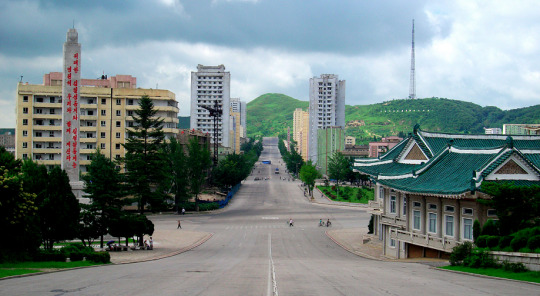
Kaesong, which is regarded as an educational center, is also notable for its many Koryŏ-era monuments. A group of twelve such sites were granted UNESCO world heritage status in 2013.
Included is the Hyonjongnung Royal Tomb, a 14th-century mausoleum located just outside the city of Kaesong.
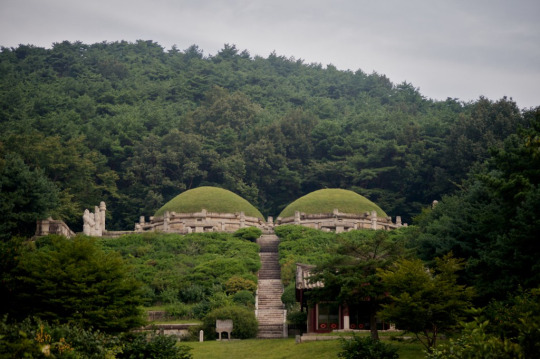
One of the statues guarding the tomb.
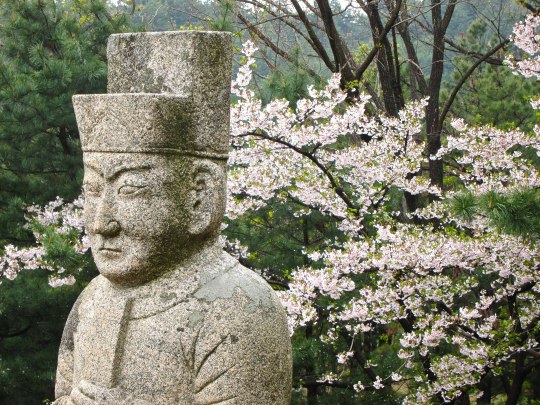
Before moving on the other cities, I also wanted to showcase one more of the DPRK's historical sites: Pohyonsa, a thousand-year-old Buddhist temple complex located in the Myohyang Mountains.

Like many of DPRK's historic sites, the temple complex suffered extensive damage during the Korean war, with the U.S. led bombings destroying over half of its 24 pre-war buildings.
The complex has since been restored and is in use today both as a residence for Buddhist monks, and as a historic site open to visitors.


Hamhung, the second largest city in the DPRK.
A coastal city located in the South Hamgyŏng Province. It has long served as a major industrial hub in the DPRK, and has one of the largest and busiest ports in the country.
Hamhung, like most of the coastal cities in the DPRK, was hit particularly hard during the war. Through relentless aerial bombardments, the US and its allies destroyed somewhere around 80-90% percent of all buildings, roads, and other infrastructure in the city.
Now, more than seventy years later, unexploded bombs, mortars and pieces of live ammunition are still being unearthed by the thousands in the area. As recently as 2016, one of North Korea's bomb squads—there's one in every province, faced with the same cleanup task—retrieved 370 unexploded mortar rounds... from an elementary school playground.
Experts in the DPRK estimate it will probably take over a hundred years to clean up all the unexploded ordnance—and that's just in and around Hamhung.
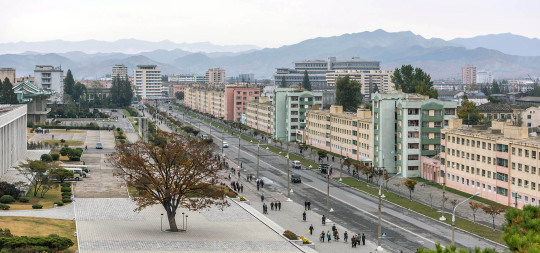

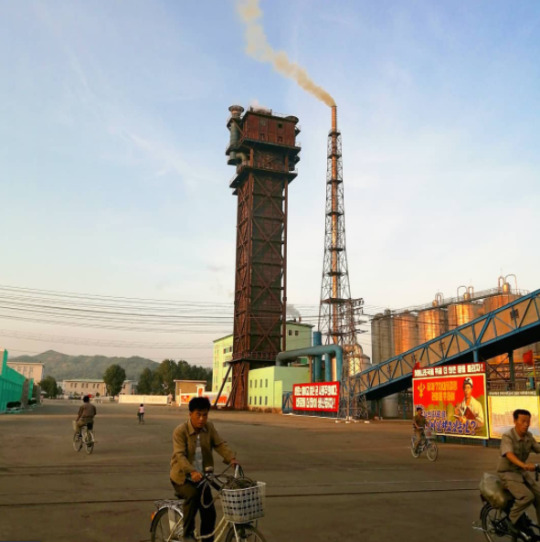
Hamhung's fertilizer plant, the biggest in North Korea.
When the war broke out, Hamhung was home to the largest nitrogen fertilizer plant in Asia. Since its product could be used in the creation of explosives, the existence of the plant is considered to have made Hamhung a target for U.S. aggression (though it's worth repeating that the U.S. carried out saturation bombings of most population centers in the country, irrespective of any so-called 'military value').
The plant was immediately rebuilt after the war, and—beyond its practical use—serves now as a monument of resistance to U.S. imperialism, and as a functional and symbolic site of self-reliance.
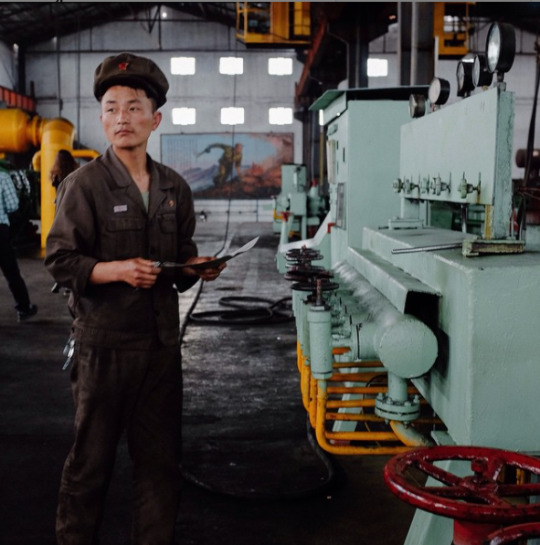
Chongjin, the third largest city in the DPRK.
Another coastal city and industrial hub. It underwent a massive development prior to the Korean war, housing around 300,000 people by the time the war broke out.
By 1953, the U.S. had destroyed most of Chongjin's industry, bombed its harbors, and killed one third of the population.
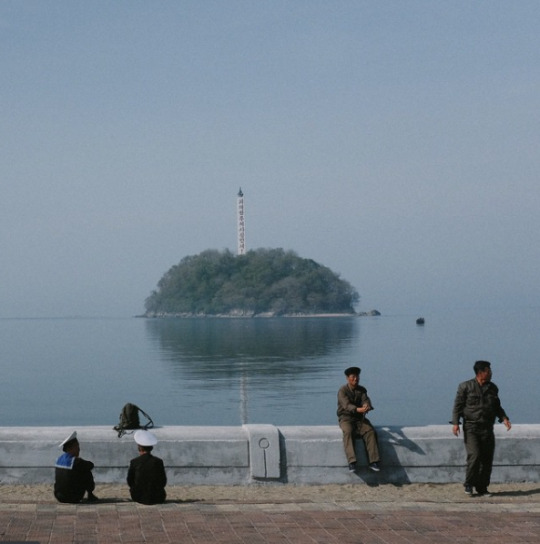
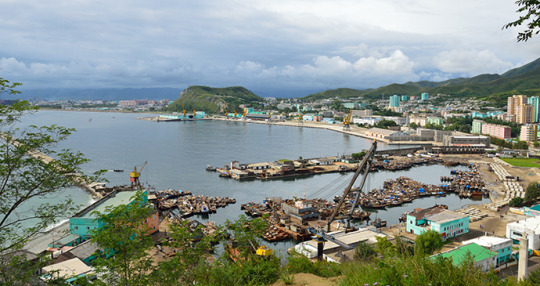

Wonsan, a rebuilt seaside city.
The city of Wonsan is a vital link between the DPRK's east and west coasts, and acts today as both a popular holiday destination for North Koreans, and as a central location for the country's growing tourism industry.
Considered a strategically important location during the war, Wonsan is notable for having endured one of the longest naval blockades in modern history, lasting a total of 861 days.
By the end of the war, the U.S. estimated that they had destroyed around 80% of the city.
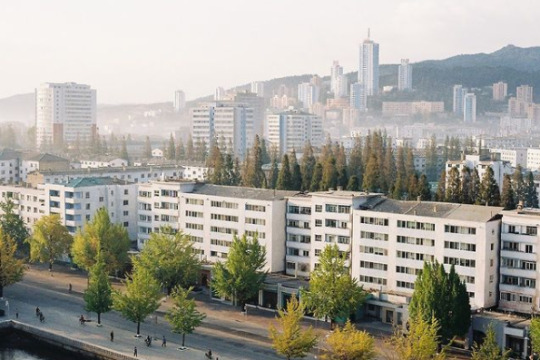

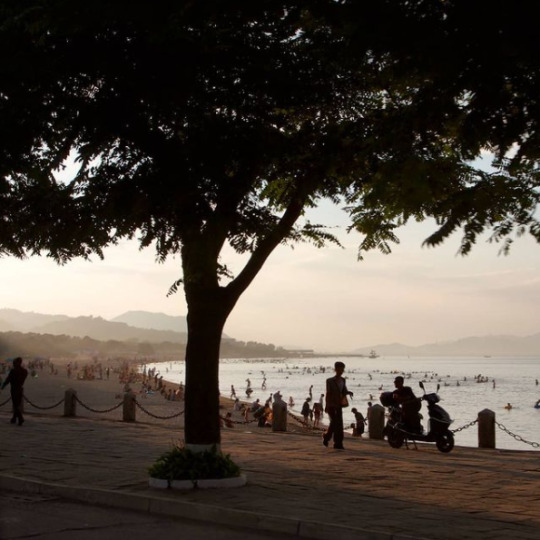

Masikryong Ski Resort, located close to Wonsan. It opened to the public in 2014 and is the first, I believe, that was built with foreign tourists in mind.
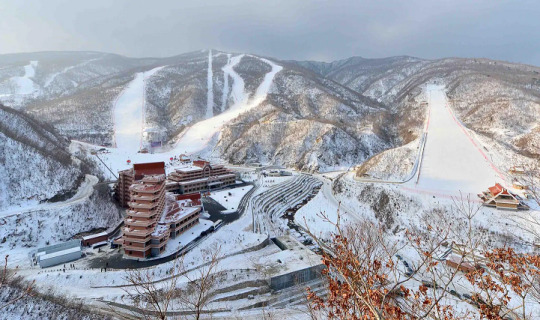
Sariwon, another rebuilt city
One of the worst hit cities during the Korean War, with an estimated destruction level of 95%.
I've written about its Wikipedia page here before, which used to mockingly describe its 'folk customs street'—a project built to preserve old Korean traditions and customs—as an "inaccurate romanticized recreation of an ancient Korean street."
No mention, of course, of the destruction caused by the US-led aerial bombings, or any historical context at all that could possibly even hint at why the preservation of old traditions might be particularly important for the city.
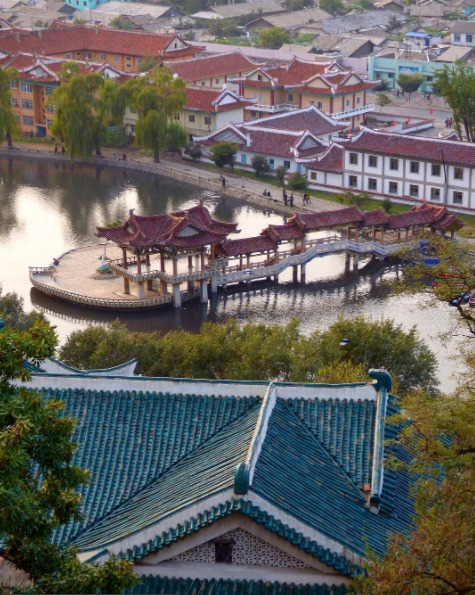

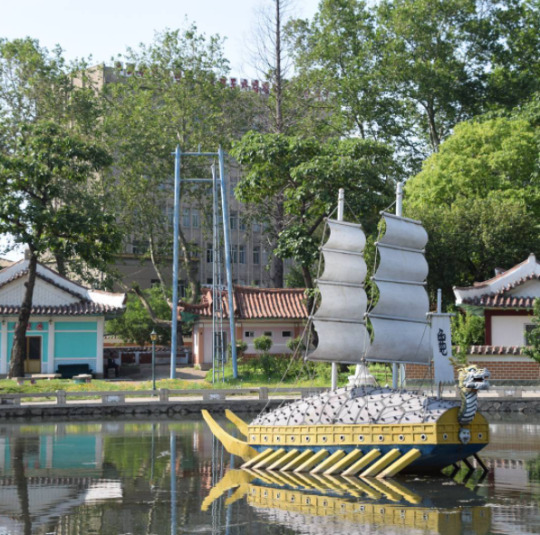
Life outside of the towns and cities
In the rural parts of the DPRK, life primarily revolves around agriculture. As the sanctions they're under make it difficult to acquire fuel, farming in the DPRK relies heavily on manual labour, which again, to avoid food shortages, requires that a large portion of the labour force resides in the countryside.
Unlike what many may think, the reliance on manual labour in farming is a relatively "new" development. Up until the crisis of the 1990s, the DPRK was a highly industrialized nation, with a modernized agricultural system and a high urbanization rate. But, as the access to cheap fuel from the USSR and China disappeared, and the sanctions placed upon them by Western nations heavily restricted their ability to import fuel from other sources, having a fuel-dependent agricultural industry became a recipe for disaster, and required an immediate and brutal restructuring.
For a more detailed breakdown of what lead to the crisis in the 90s, and how it reshaped the DPRKs approach to agriculture, check out this article by Zhun Xu.

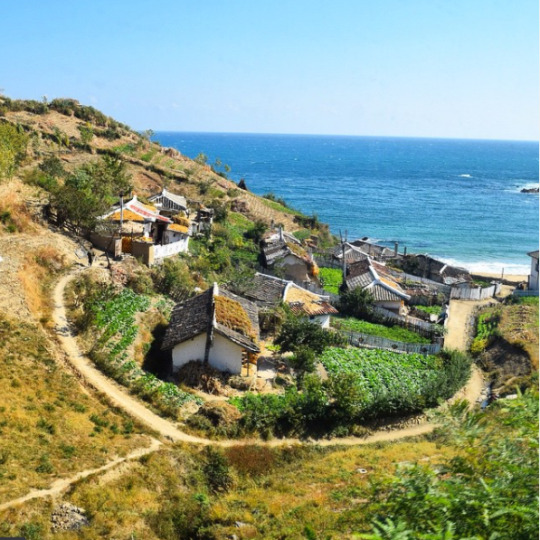
Some typical newly built rural housing, surrounded by farmland.
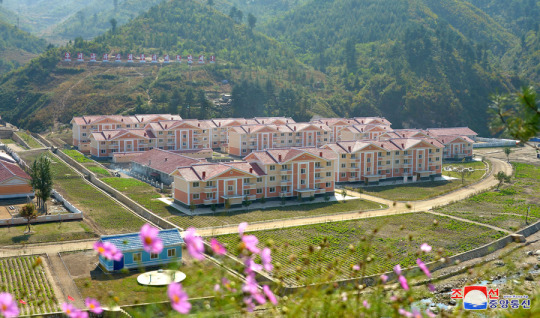
Tumblr only allows 20 pictures per post, but if you want to see more pictures of life outside Pyongyang, check out this imgur album.
#dprk#north korea#i've had this post unfinished in drafts for almost a year#also sorry about the spelling and potential formatting issues it's a nightmare to edit at this point#it was literally just meant to be a collection of picture and then the writing just sort of happened#enjoy the brief heritageposts history lesson i guess
6K notes
·
View notes
Text
What can we learn from a dinosaur feather preserved in amber? Let’s go behind the scenes of the Museum’s collection of amber fossils to find out!
#science#amnh#museum#fossil#natural history#nature#animals#dinosaur#fact of the day#paleontology#did you know#natural history museum#museum of natural history#amber#cool animals#evolution#stem#insects#entomology#museum collections#ancient animals#prehistoric animals#dinosaurs
4K notes
·
View notes
Text
they really should warn you before you start studying history that it's going to turn you into a complete freak about at least one historical figure like. somebody should give you a heads up that someday youll be reading cicero's letter to some other ancient roman about his weeklong episode of explosive diarrhea from eating mushrooms ar a dinner party and still go online to post about his consular senussy
#tagamemnon#history#we're all having a bit of a collective hallucination about this mans big naturals rn but for the record ive always been like this#queueusque tandem abutere catilina patientia nostra
2K notes
·
View notes
Text
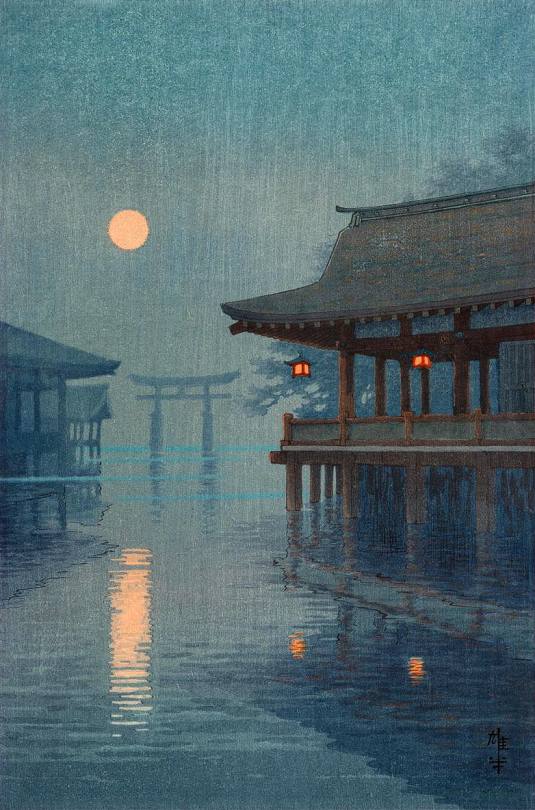
Moon over Miyajima, Ito Yuhan, ca. 1930
#art#art history#Asian art#Japan#Japanese art#East Asia#East Asian art#shin-hanga#woodblock print#Ito Yuhan#landscape#landscape art#night scene#Showa period#Showa era#20th century art#private collection
3K notes
·
View notes
Text
By the way, if any of you, like me, are nerds who love maps, I highly recommend checking out the Turgot map. I won't link it or tumblr will eat this post, but you can find it just by searching Wikipedia - it's an incredibly detailed 3D map of Paris made in the 1730s, and by "incredibly detailed," I mean
incredibly
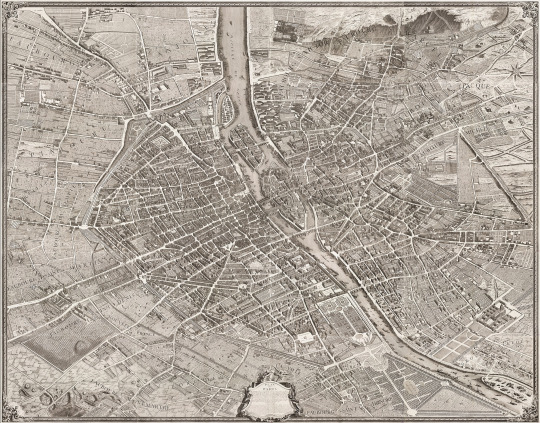
incredibly

INCREDIBLY
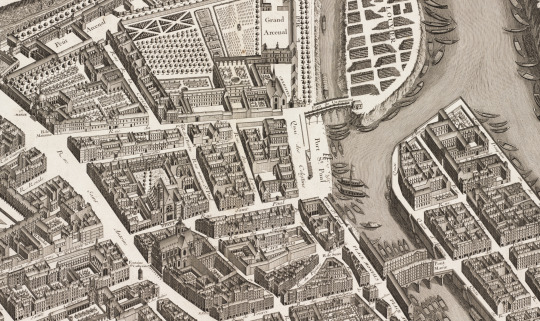
DETAILED!

Look, there's Notre Dame! Individual trees! Individual lampposts! Individual boats!! (Some of them even have little people in lol, though clearly not to scale)
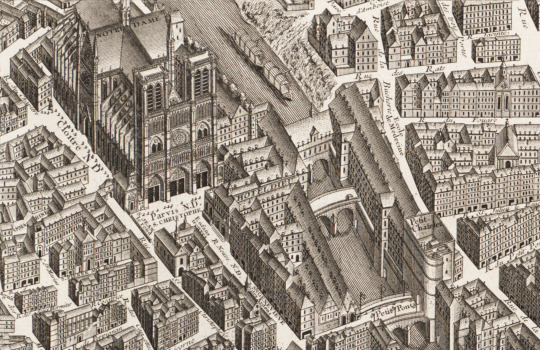
The full scan is over 35,000 pixels wide, guys! That's over 10 feet of map!! All drawn and engraved by hand! I'm freaking out a little! What an absolutely amazing piece of history & art!
#I'm slowly collecting stupidly detailed maps of Paris for book research but this is the wildest one I've found so far#and in 3D! It really gives you a sense of the city like nothing else#history#french history#Paris#maps
16K notes
·
View notes
Text
I do think Blazing Saddles handled its one depiction of native americans very poorly, and the full extent of its representation of chinese workers on the railroad is they were literally just there. not even one single speaking line. unclear if this is worse or better than the redface.
it's fucking phenomenal at lampooning antiblack racism though. extremely blatant, extremely funny satire, which is constantly and loudly saying "racism is the philosophy of the terminally stupid at best and morally depraved at worst, and we should all be pointing and laughing at them 24/7"
plus the main character is a heroic black man who has to navigate a whole lot of bullshit but is constantly smirking at the extraordinarily stupid racists and inviting the audience into the joke. the one heroic white character is a guy who was suicidally depressed until he met the protagonist and they just instantly became buds, and he's firmly in a supporting role the whole time and happy to be there. the protagonist saves the day with the help of his black friends from the railroad, and uses the position of power he was given to uplift not only those friends, but all the railroad workers of other minorities too, in an explicit show of solidarity.
anyone saying "Blazing Saddles is racist" had better be talking about its treatment of non-black minorities. it had better not be such superficial takes as "oh but they say the n-word all the time" or "they have nazis and the kkk in there!" because goddamn if that's the full extent of your critique I very seriously suggest you read up on media analysis. there is too much going over your head, you need to learn to recognize satire.
#blazing saddles#finx watches tv#finx rambles#I recognize that I'm saying all this as someone who's not black#but I am also saying it as someone with a basic understanding of race relations in the usa#and a basic understanding of sarcasm#bc it really does not take more than that to recognize what they're doing in this movie#it is NOT subtle#and it is very funny#mel brooks movies are kinda hit or miss for me ngl#men in tights is great if a bit too crass for my taste#spaceballs has great jokes but the central story lacks any real heart so it doesn't grab me#history of the world was just kind of unpleasant and then I switched it off#but blazing saddles? phenomenal#I could not stop laughing the whole way through#and the central story DOES have heart bc it's the friendship between bart and#whassisname#jim#the Kid#plus bart working out how to succeed at an impossible task#also frankly cleavon little just grounds the comedy really well even before gene wilder shows up and we get their chemistry#bc he's cool calm collected and constantly inviting the audience into the joke#but the character's not too cool to ever mess up or ever be silly#he makes bad choices and gets into bad situations and then has to get himself out of them#but it's.....oh wait duh there's a term for this already#he's the straight man#he grounds all the zany nonsense by being in strong contrast to it#and he does a great job of it!#anyway#point is I deeply enjoyed this movie and I'm glad I finally watched it
1K notes
·
View notes
Text
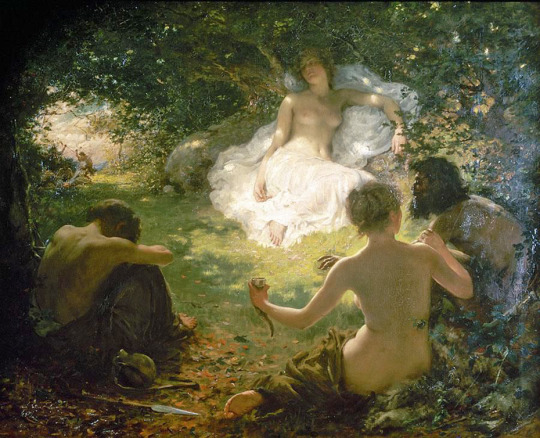
Serena, Found of Savages by Thomas Benjamin Kennington
#art painting#vintage art#art#art history#women in art#british art#beautiful art#thomas benjamin kennington#british artist#oil on canvas#oil painting#old art#private collection
2K notes
·
View notes
Text

LIFE Picture Collection. Jordan Petra. 1949
#life picture collection#unknown photographer#black and white#photography#vintage#art#history#black and white photography#vintage photography#1940s
1K notes
·
View notes
Text

in honor of laika coming back from the dead to release a new movie, a kubo of mine with some questionable summer fashion. im love he
inspired by @/kittarts' coraline art ;o;/
#idk if tagging directly is rude/annoying#so ima play it safe#inspired by my summer fashion of choice (it is summer in australia)#he play banjo#he probably studies psychology or history or something#something super smart but you dont know that bc he spends most of his time busking and collecting bugs#maybe he's studying to be an entymologist#the bug people#idk how to spell it#kubo and the two strings#kubo: and the two strings#laika studios#laika#kubo#modern au#college au#SORRY TO EVERYONE THAT FOLLOWED ME FOR STORMLIGHT#ILL DRAW STUFF I SWEAR PLEASE DONT LEAV ME EEEEE
1K notes
·
View notes
Text

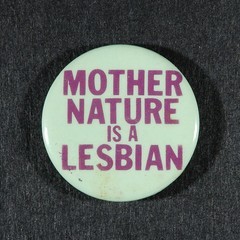

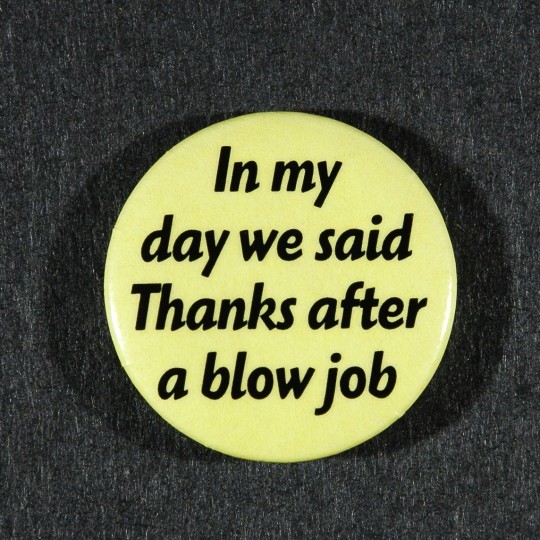

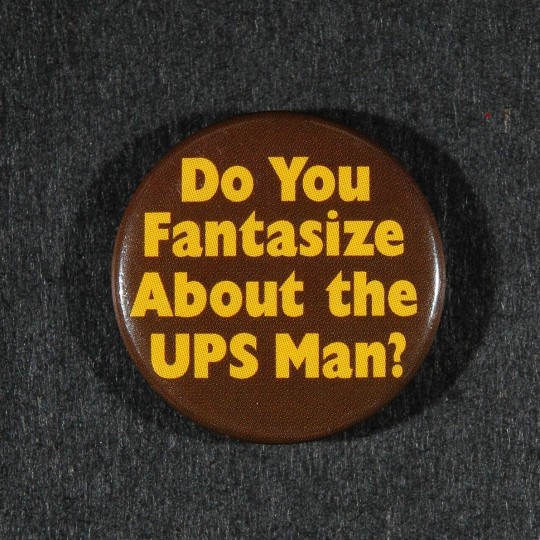

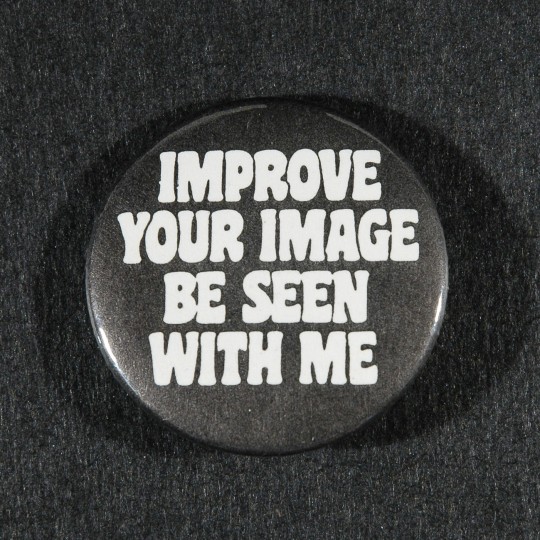

some pins from The Lesbian, Gay, Bisexual, Transgender (LGBT) Archives of Western New York pin exhibit (1970-2018)
#have tons more to post. so many good ones in this collection#lgbt#queer#trans#gay#lesbian#lgbt history#queer history#vintage lgbt#vintage queer#vintage trans#vintage lesbian#bisexual
14K notes
·
View notes
Text
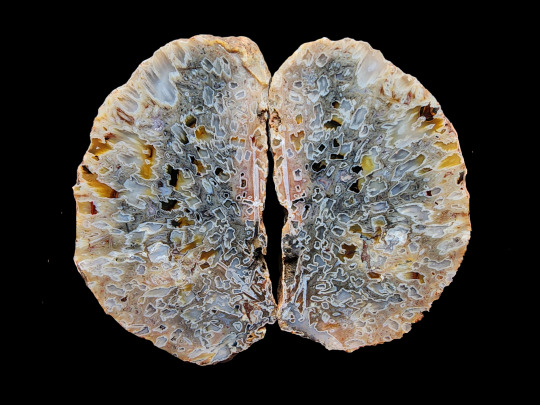
Pseudomorph Tube Agate
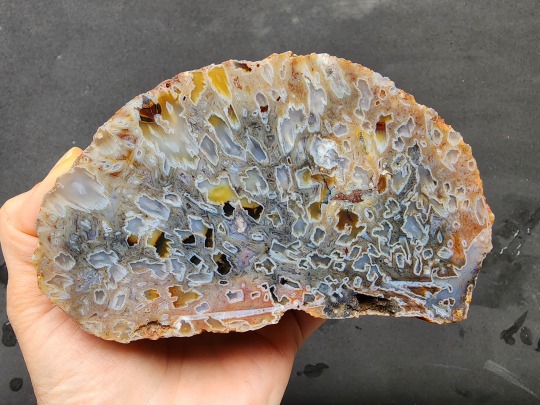
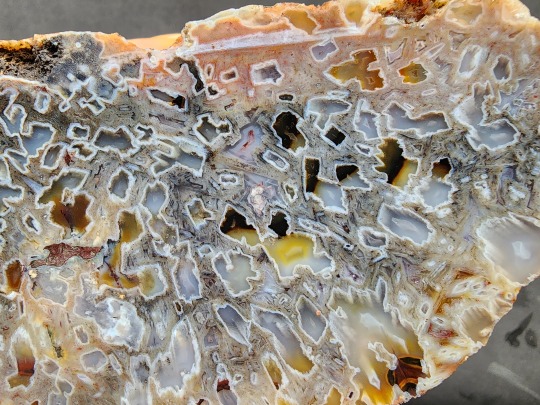
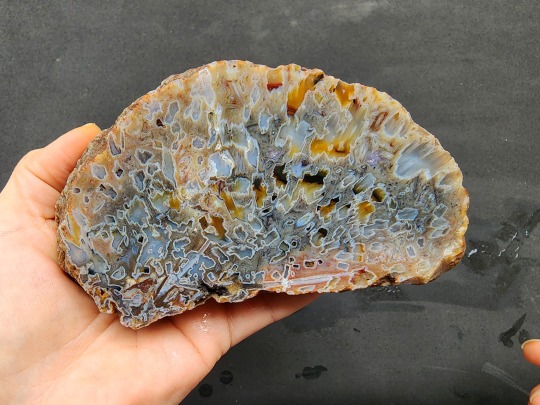
Like little memory chambers in the brain. It's a marvelous pattern.
#agate#stone aesthetic#special collections#achat#crystal collection#rocks and minerals#gemstones#geology#collectibles#crystals#natural art#natural history#memories#Pseudomorph#zeolite#mineralspecimen#mineralogy#geology rocks#crystal healing#healing crystal#macro photography#macrophotography#nature pics#decoration#decora fashion#nature photography#nature aesthetic#nature lovers#nature images#landscape
708 notes
·
View notes
Text


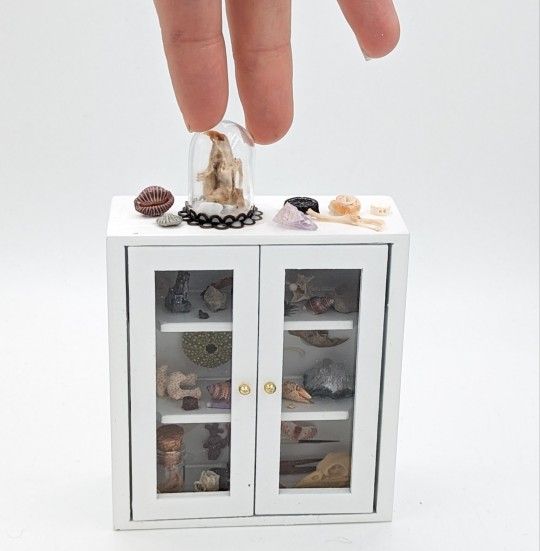
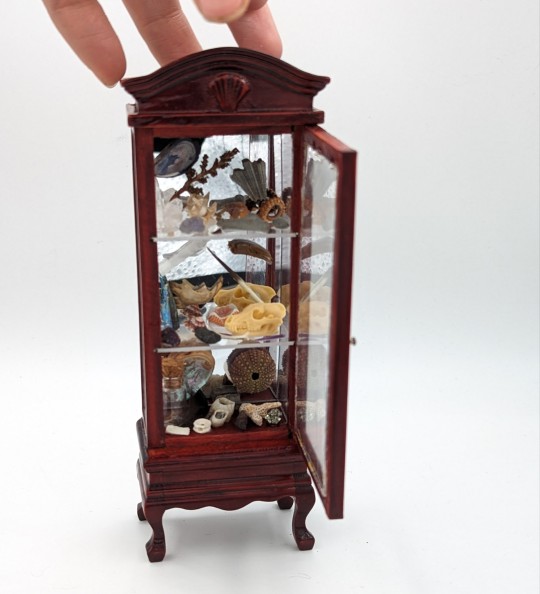
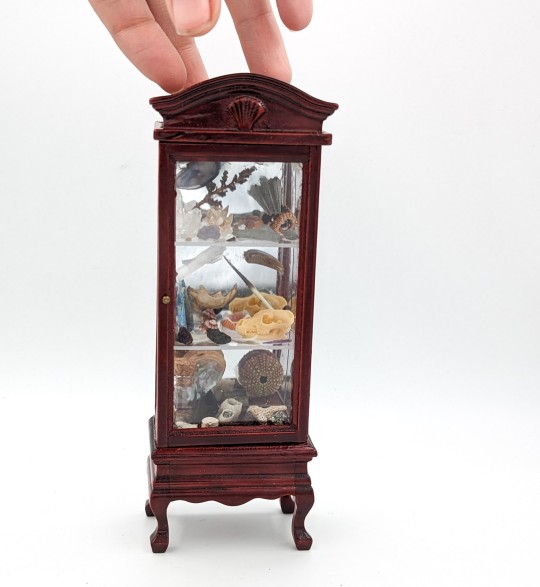


Three new dollhouse curio cabinets! I didn't make the cabinets themselves but just found and arranged the contents.
#miniature#oddities#vulture culture#cabinet of curiosities#goblincore#natural history#curio collection#curio#dollhouse miniatures#dollhouse#cabinet#curiosities
1K notes
·
View notes
Text
On this day in 1936, the last known thylacine (Thylacinus cynocephalus) died at the Hobart Zoo in Tasmania. The animal’s passing marked the extinction of its species. Also known as the “Tasmanian wolf,” the thylacine was Australia’s largest marsupial predator. It sported a dog-like form, with distinctive stripes, and a jaw that could open up to 80 degrees—one of the largest gapes of any mammal.
The thylacine fed primarily on small mammals and birds. Nocturnal and shy, it was seldom seen by humans. However, beginning in the 19th century, settlers believed the animals threatened their livestock and, spurred on by a bounty offered by the government, hunted them relentlessly. Attempts at protecting the species in the wild came too late: Despite numerous unconfirmed reports of sightings in recent decades, no definitive sightings have occurred since the 1930s.
#science#museum#nature#natural history#animals#fact of the day#did you know#thylacine#extinction#animal facts#cool animals#australia#tasmania#museum collections#conservation#on this day#amnh#on this date
3K notes
·
View notes
Text
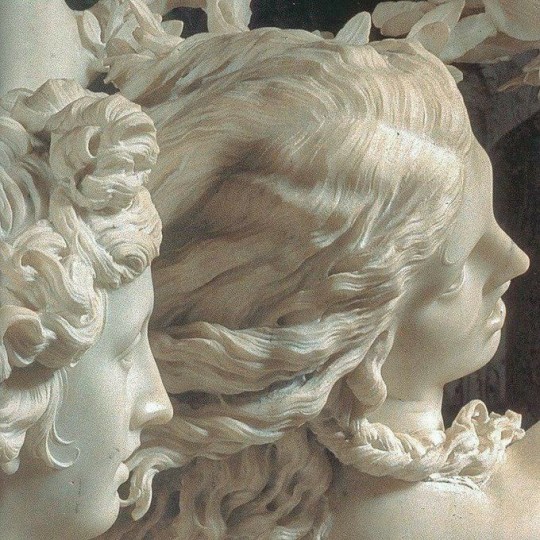



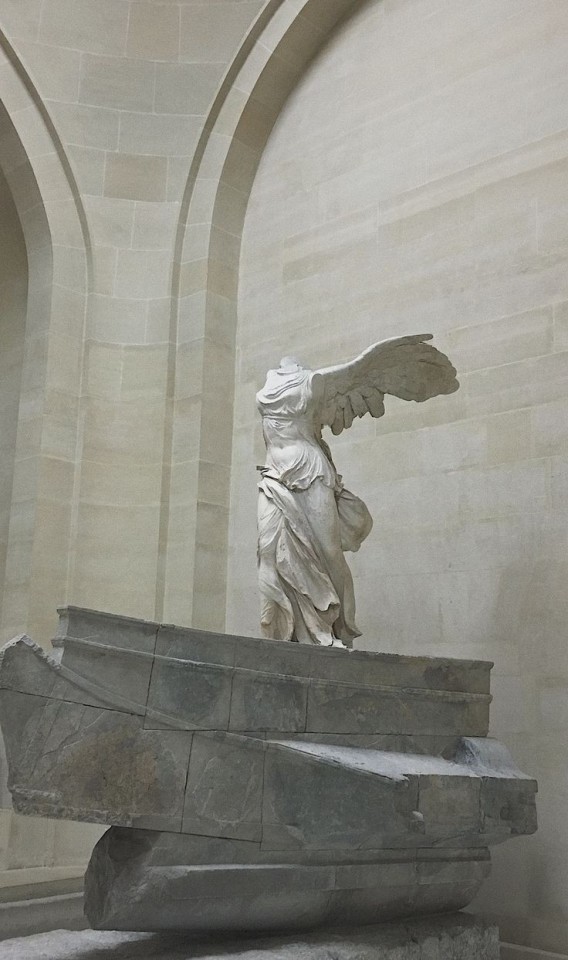
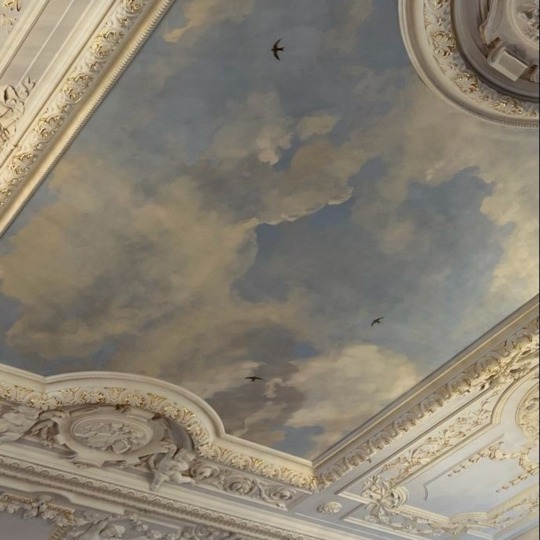



#moodboard#aesthetic#icons#indie#pinterest#museum#museum collections#architecture#architectdesign#academia moodboard#academia aesthetic#academia style#academia#dark academia#light academia#romantic academia#chaotic academia#history#study aesthetic
1K notes
·
View notes
Text
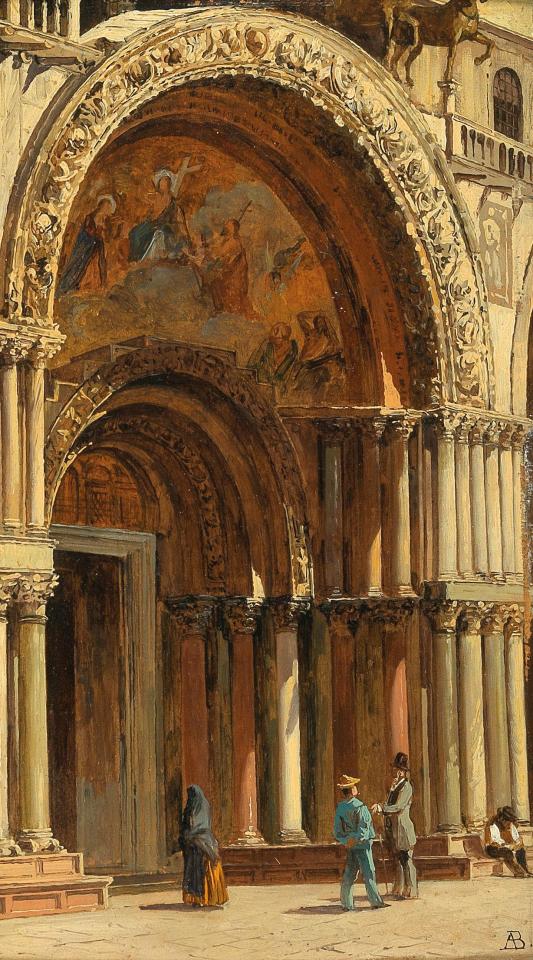
Venice, the Entrance to St. Mark's Basilica, Antonietta Brandeis (1848-1926)
#art#art history#Antonietta Brandeis#female artists#veduta#vedutisti#vedutismo#cityscape#Venice#Italy#Czech art#Czech-Italian art#19th century art#oil on panel#private collection
2K notes
·
View notes